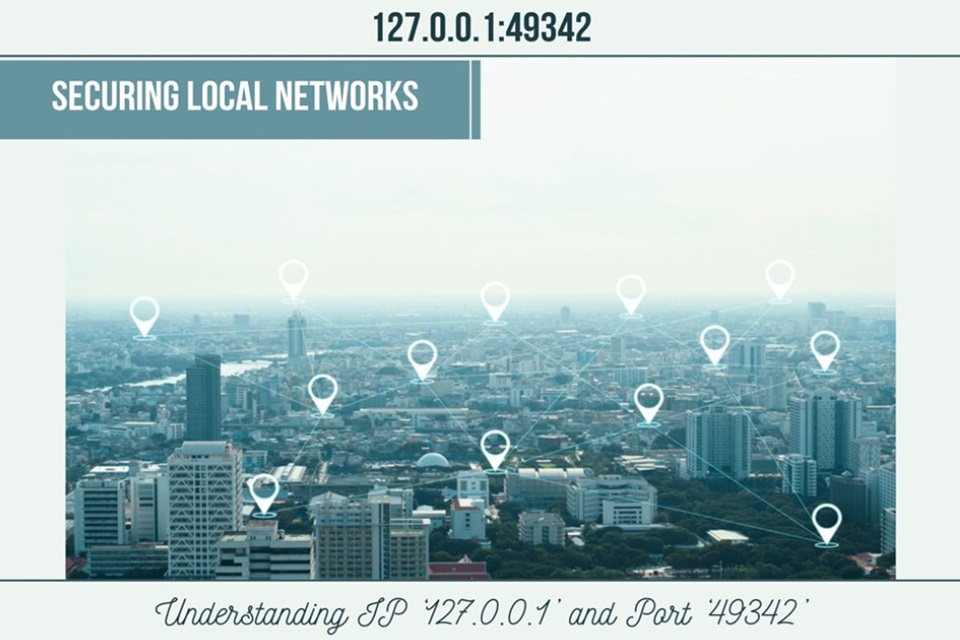127.0.0.1:49342: Understanding Localhost & Network IP Address Hosting
In the world of computer networking, IP addresses are fundamental for identifying and communicating with devices on a network. One such address is ‘127.0.0.1’, often referred to as the “loopback address.” Combined with a port number like ‘49342’, it is commonly used in various local networking and development scenarios. This article delves into the significance of ‘127.0.0.1’ and how port numbers like ‘49342’ are used in local network setups.
What Is 127.0.0.1?
‘127.0.0.1’ is known as the loopback address. It is used by computers to test network software and configurations on the same machine. When you send data to ‘127.0.0.1’, it is routed back to your own computer instead of going out onto the broader network. This makes it an invaluable tool for developers and IT professionals.
Significance Of Port Number 49342
In network communication, a port number is used to differentiate multiple services or applications running on a single IP address. Port numbers range from 0 to 65535, with certain ranges designated for specific uses. Port ‘49342’ is not a standard port, meaning it is often chosen randomly or for specific applications.
Common Uses of Custom Ports:
- Development and Testing: Developers often use high-numbered ports like ‘49342’ for testing new software or services locally. It allows them to simulate network conditions without interference from other applications.
- Local Servers: Many local servers, such as databases or web servers, run on custom ports to avoid conflicts with well-known services that use standard ports.
- Debugging: When debugging network applications, using a unique port number helps isolate issues and ensures that traffic is routed correctly for testing.
How To Use 127.0.0.1:49342?
To utilize ‘127.0.0.1:49342’ effectively, follow these steps:
- Setting Up a Local Server: Start by configuring a server application to listen on port ‘49342’. This could be a web server, database server, or any network service.
- Testing Network Applications: Use network tools or applications to connect to ‘127.0.0.1’ on port ‘49342’ to test functionality. For example, you might access a local web service by entering ‘http://127.0.0.1:49342’ in your web browser.
- Troubleshooting: If you’re encountering network issues, ensure that no other applications are conflicting with your chosen port. Use network monitoring tools to check for active connections and troubleshoot problems.
Security Implications Of Using Local IPs & Ports
When using local IP addresses like ‘127.0.0.1’ and custom ports such as ‘49342’, it’s important to be aware of potential security implications. Although ‘127.0.0.1’ is not accessible from outside the local machine, improperly configured local servers can still be vulnerable to attacks if not properly secured. Ensure that any services running on custom ports are protected with appropriate security measures, such as firewalls and authentication protocols, to prevent unauthorized access and data breaches.
Conclusion
Understanding the localhost address ‘127.0.0.1’ and custom port numbers like ‘49342’ is essential for anyone working with networked applications. Whether you’re a developer testing software or managing local network services, these concepts play a crucial role in ensuring smooth operations. By leveraging these tools effectively, you can enhance your networking and development processes.
FAQs
What is the purpose of the loopback address ‘127.0.0.1’?
127.0.0.1 is used to test network applications locally on your own machine. It allows developers to simulate network conditions and troubleshoot software without affecting the broader network.
Why use a port number like ‘49342’?
Port numbers like 49342 are used to differentiate multiple services on the same IP address. Custom ports are often chosen to avoid conflicts with standard ports and to isolate testing environments.
How can I secure a local server running on port ‘49342’?
To secure a local server, use firewalls to restrict access, implement strong authentication methods, and regularly update your software to address vulnerabilities. Ensure that the server is only accessible to authorized users.





